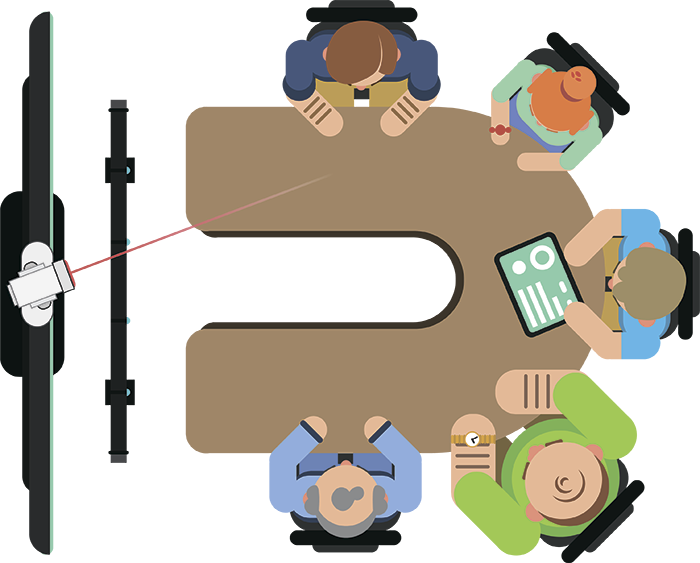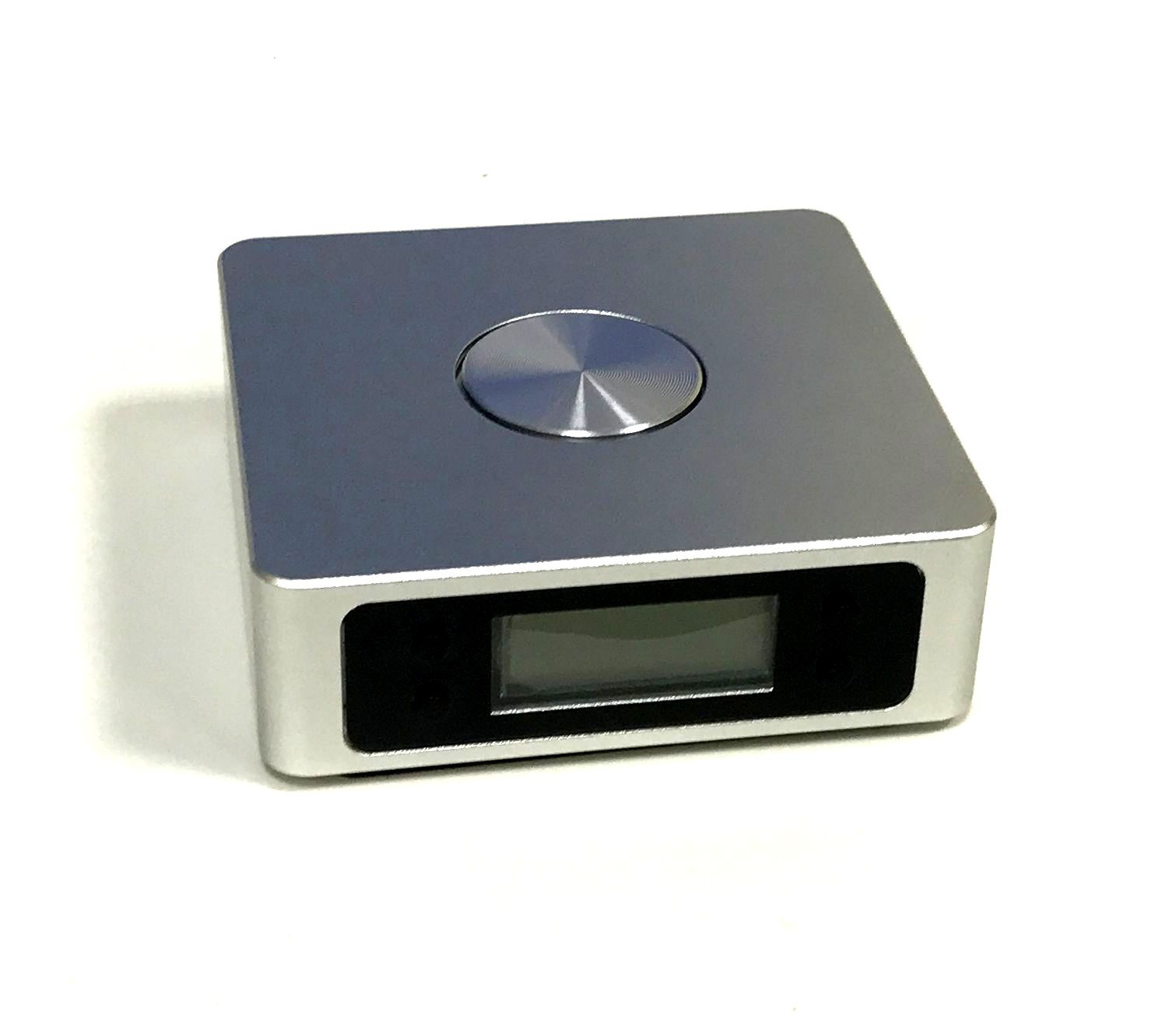 In the previous article,
In the previous article, we promised to talk about two new ways to implement automatic pointing of a PTZ camera at an active participant in the meeting room. This functionality significantly revives video conferences and eliminates the need to manually switch the position of the video camera.
Recall that in the traditional way the task of auto-guidance is implemented using the
congress system . This solution has already been tested by us and implemented in a large number of
projects . In this embodiment, the microphone consoles are used not only for high-quality sound capture, but also for linking the coordinates of the camera's “presets” to the position of the microphones in the room.
Unfortunately, not all meeting participants welcome the microphones on the “goose neck”, but everyone wants to leave the functionality of the automatic guidance of the PTZ camera. In general, it made us think about solving the problem. And we found two interesting options. Naturally, you will not have to buy a
Polycom Eagle Eye Director for this, as other integrators would suggest to you :)
First way
So, the first method, let's call it semi-automatic, is based on the use of special "clickers". The advantage of this method is the ability to use
speakerphones or a
microphone array in a meeting room, which allows speakers not to think about where to speak, voice will be captured in any direction. In general, no “goosenecks”. To do this, use the ready-made kit, which consists of the following components:
- Central unit. It connects to the RS232 / 485 control port of a PTZ camera and transmits control signals to activate its drives. It receives power via a separate USB input, is compact and can be hidden behind a video camera.

- Directly radio transmitters of control signals ("clickers"), which are powered by conventional AAA batteries. They have a button on their case, when clicked, a command is sent to select the desired preset for the camera in the central unit and, accordingly, the camera switches to the desired position. In theory, “clickers” are assigned to specific seating positions in the meeting room, which allows you to fine-tune camera presets.

In practice, the "clickers" need to follow and introduce regulations for their use. For example, on each clicker, specify the preset number of the PTZ camera to which it is “tied”, in the same way, mark the places at the table. The process of setting up the central unit is trivial and takes about 10 minutes for 8 “clickers”. The work of the solution can be viewed on the video below.
In our case, a prototype is used, so the appearance of the "clicker" is far from ideal. We would like to know your opinion on this decision. Are you interested in it? Would you use it in your meeting rooms during video conferencing? Write in the comments!
Second way
The second method is more convenient, reliable and innovative! :) It is fully automatic and does not need to use separate devices to bind the speaker to the space in the meeting room.
Guidance of a PTZ camera occurs by voice, namely, by “beam” or “rays”, which is built by an array of microphones, highlighting the speaking participants in the room. It's all like adults, only cheaper! The hardware manufacturers of video conferencing systems (Polycom, Cisco, etc.) have
similar solutions , but their cost is measured in several tens of thousands of dollars.
We had to write a special software and spend a lot of time on its calibration in order to make this method real. So, we present you
UnitKit Medium , which consists of the following components:
- Microphone array Phoenix Audio Condor, which is a 122 centimeter tube, which has an array of 15 microphones. Condor is able to effectively capture the voice to a depth of 10 meters, which allows you to completely abandon speakerphones and wires on the table in a small or medium-sized meeting room. It is usually located below or above the screen.
During his work, the condor divides the meeting room into 9 sectors and tracks the occurrence of voice sources in each of them simultaneously. We decided to use this feature of the array of microphones to create our solution. Many thanks to the developers from Phoenix for providing the interface to the DSP and adapting the device firmware to our requirements!

- PTZ PTZ camera supporting VISCA / Pelco-P / Pelco-D control protocols. The characteristics of a video camera, such as optical zoom ratio, viewing angle, connection interfaces, are selected according to the size of the room and other parameters [in more detail we described this in the previous article].
- Active speakers for room sounding. These speakers or speakers built into the TV must be connected to the audio output of the microphone array to analyze the sound loop and suppress the echo effect. Another very interesting option for sounding the room is the Yamaha soundbar. Today, it is the only compact solution that is Dolby Atmos certified and delivers excellent sound quality.
- And most importantly - specials. the CleverMic Tracker program, which is installed on a PC (with Windows), to which an array of microphones and an RS232 / 485 PTZ camera are connected via a USB interface. Software in real time with the help of some magic analyzes and filters the directions of the “rays” created by the array of microphones in the process of communication in order to relieve you of vertigo during abrupt and false camera turns. You say, OK, you got one coordinate (turn), and how to choose the approximation and tilt of the camera? Very simple - they are set manually in the software interface, after calibration, which allows you to set the correspondence of the “rays” to the vectors to specific seats at the table in the meeting room.
As a result, it works as follows: the Condor determines the direction to the speaker, the software associates it with the vector to the nearest sitting position and issues a command to install the corresponding “preset” to the PTZ camera.
Now we are working to create a convenient interface for the program. The program will be supplied free of charge as part of the
UnitKit Medium kit. The following video clip shows how it works.
Again, we are interested to know your opinion: do you like this method of autoname? Are you ready to use it in your projects?
You can leave your opinion in the comments to this article or you can directly address the author of the article, Tatiana Usikova,
usikova@unitsolutions.ru